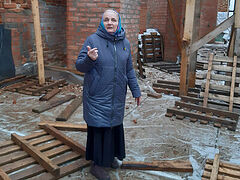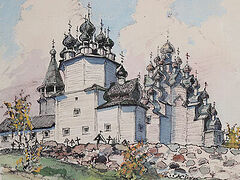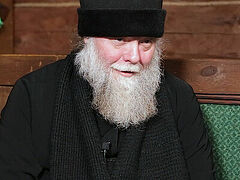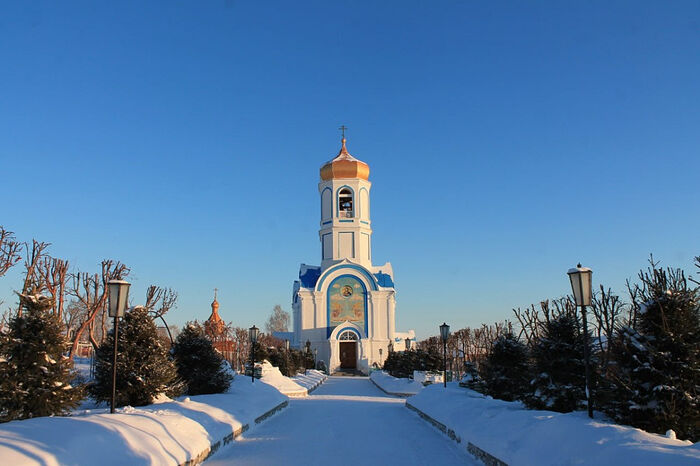 Holy Protection-St. Alexander Nevsky Monastery in Kolivan
Holy Protection-St. Alexander Nevsky Monastery in Kolivan
This article concerns a distant Siberian monastery, quite young if you count from the year of its foundation, but by the special grace of God, sanctified by a deep tradition received from ascetics of the past century.
Metamorphoses of history
One of the saints of our times, St. Justin (Popović) said that the spiritual health of a people is measured by the number of monastics amongst the people. And a true testimony that the people take care for their moral health is when they respect and love monasticism and take care for its prosperity… “In our times, not many people understand and accept monasticism, but there will always be souls born into this world striving for communion with God, thirsting and hungering for the Truth and for Divine food. And monasticism is designed to satisfy this hunger and thirst—this is why it exists.” These words belong to Abbess Nadezhda (Yeryomina), the abbess emeritus of Holy Protection-St. Alexander Nevsky Monastery in the Novosibirsk Diocese.
The place where the monastery was founded in 1992 is still officially known as the “working village” of Kolivan, but not every village can boast such a remarkable history with so many metamorphoses as have befallen the Siberian Kolivan. Since the end of the eighteenth century, a small prison settlement (Chaussky Ostrog) found itself on the main Siberian highway, connecting Moscow with China, Mongolia, and Central Asia. And already in 1822, the entrepreneurial spirit of the local residents, merchants, and artisans allowed Kolivan (the etymology of this name given to the settlement is unclear) to obtain the status of a city, with its own coat of arms. Moreover, Kolivan soon “moved” to a new, higher place, where it was no longer threatened by the frequent floods that hampered the city’s development. It is characteristic that the first stone building there was the three-altar Cathedral of the Life-giving Trinity (1867). That was followed by the Church of the Holy Prince Alexander Nevsky (1887), built with the personal funds of the merchant Kirill Krivtsov in memory of the murdered Emperor Alexander II. A short while later, a third church was erected, in honor of the feast of the Holy Protection (1890).
The important trade center, with famous markets, with its own production facilities supplying goods throughout Russia as well as to Holland and France, could continue to flourish. But as often happened with cities beyond the Urals and in Siberia, Kolivan began to lose its importance in the late-nineteenth century, being located far from the newly laid railroad tracks to the east (the new Novo-Nikolaevsk—now Novosibirsk—was lucky). And the Soviet power, which established itself here a couple of decades later, had no need for the enterprising and hardworking “alien” merchant class. In 1925, after the famous Kolivan uprising against the food requisitioning of 1920, Kolivan became a village.
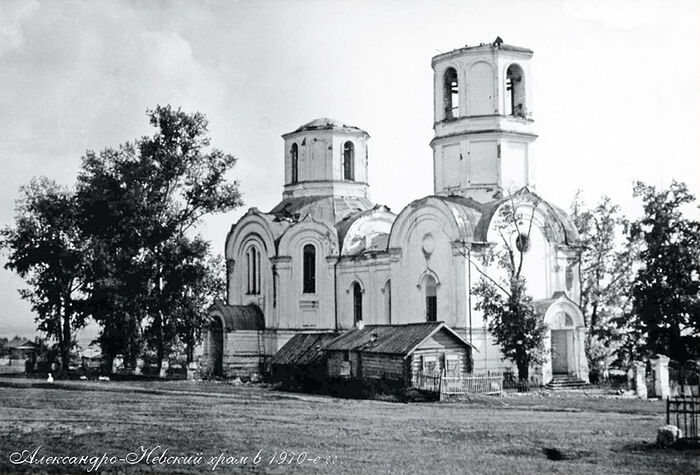 St. Alexander Nevsky Church, Kolivan, 1970s
St. Alexander Nevsky Church, Kolivan, 1970s
The image of the pious city with its strong foundations was literally erased from memory—first of all by the barbaric destruction and rebuilding of churches. The St. Alexander Nevsky Church, closed in 1934 and reopened in 1946 by request of the faithful during a brief church “thaw,” was finally ruined completely in the 1960s and stood until 1990 as a bitter testimony to the desecration of the holy site.
Rebirth
But God can’t be desecrated—let us recall the words of Mother Nadezhda quoted at the beginning of the article: “There will always be souls born into this world striving for communion with God, thirsting and hungering for the Truth and for Divine food.” In those same post-war years, when Kolivan’s more successful neighbor Novosibirsk was growing rapidly and became a center of science (the Siberian branch of the USSR Academy of Sciences and the famous Akademgorodok were established in the late 1950s), the spiritual life did not stop there at all, despite the constant opposition of the authorities and despite the fact that the dilapidated Holy Ascension Church remained the only church, like a cathedral, in a city that had grown to a million people. It was in these conditions that the church began to gather a monastic community in the late 1940s, which was supported by all the hierarchs who served on the Novosibirsk cathedra. A particularly significant contribution to the cultivation of monasticism in the Novosibirsk land was made by Metropolitan Bartholomew (Gorodtsev, †1956) and Archbishop Pavel (Golishev, †1979).
Among the Novosibirsk nuns were ascetics who passed through Soviet camps, but there were also several young ones who carried out their obediences with the same zeal in the church itself, on the kliros of the Ascension Cathedral, in the prosphora bakery, and the vestry. Among them was the future first abbess and organizer of the Kolivan Convent, Nina Yeremina, who was tonsured by Vladyka Pavel with the name Nadezhda in 1971 together with her mother, the future schemanun Seraphima.
There were nuns without a monastery, the opening of which was of course completely out of the question in the years when every step the bishop made was strictly controlled by the party “representative.” On the territory of the Novosibirsk Province (which is larger than three Frances), there were never any monasteries at all until 1992. The first sisters remember 1988, after which the attitude towards the Church began to change. To celebrate the millennium of the Baptism of Rus’, the city authorities allocated a hall at the musical comedy theater and allowed the monastics to come in their habits. It was such an unusual sight that the people thought they were the actors, part of the show…
The new head of the diocese, His Grace Bishop Tikhon (now the Metropolitan of Vladimir and Suzdal), who arrived in Novosibirsk in 1990, was also not a little surprised to see about seventy nuns at the cathedral; they constituted a full-fledged monastic community headed by Mother Nadezhda, who had already been elevated to the rank of igumena by that time. The providence of God led and united many people with similar aspirations. At the aforementioned celebration, Mother found herself in the presidium next to Hieromonk Iliy (Nozdrin), who had just returned from Mt. Athos. “What monastery are you from, Mother?” Fr. Iliy asked. “We don’t have a monastery. Pray, Batiushka, for it to be opened,” Igumena Nadezhda asked, and later came to believe that it was by the prayers of the Athonite monk, the future elder, that the long-awaited event came to pass.
The opening of the monastery was important to Vladyka Tikhon, who before his appointment to the Novosibirsk cathedra had invested much effort in the restoration of Danilov Monastery in Moscow—the first of the reopened monasteries in the country as it began resurrecting its holy places from oblivion. But it turned out that representatives of the local authorities were also ready to contribute to the founding of a monastery: The revival of souls who remembered their Christian origin was a widespread phenomenon then. Thus, twenty-five miles from Novosibirsk, in the former merchant town of Kolivan, next to the restored ancient St. Alexander Nevsky Church, it was decided to arrange the first convent in those parts.
The endeavor was blessed by Patriarch Alexei II of Moscow and All Russia, who in 1991 made the first visit to Siberia in the history of the Patriarchate. His Holiness was invited to Kolivan (this name should have reminded the Patriarch of the ancient name of his native Tallinn, and the Tallinn cathedral, where his Church life began in his childhood, which was also dedicated to St. Alexander Nevsky) and he consecrated the foundation stone of the sisters’ cell building, and also the large wooden cross that is low located in the narthex of the church.
A year later the restoration was completed. In the summer the church was solemnly consecrated by Vladyka Tikhon, and soon, by decision of the Holy Synod, Igumena Nadezhda was appointed the abbess of the Holy Protection-St. Alexander Nevsky Monastery.
To be continued…



